A piece of restored art hides many secrets. We may marvel at the glory of the artwork but we don’t see the remarkable techniques and painstaking work that went into restoring it. Now, Homo Faber offers the chance to discover exactly that. This exhibit lifts the lid on the world of art restoration, celebrating and illuminating the work of the highly skilled artisans who bring artworks back to life. Watch as master restorers from Milan’s Open Care – a leader in the field of art restoration – work on pieces of antique and contemporary art in front of your eyes, revealing the secrets of their incredible work.
Discover the catalogue
Detective, doctor, surgeon, chemist, historian, artisan: an art restorer must be all these and more in order to diagnose and treat a damaged artwork in the best way. A tapestry restorer could spend many hours in a lab colour-matching up to 250 different tones of thread to ensure the repair work respects the natural fading of the tapestry. A restorer of a contemporary design piece must work to find the right chemical solvents to treat the particular materials the artist used. Each project is unique, and each restored work is not only a product of the artist who created it but of the unsung hero whose passion and attention to detail restored the artist’s original vision.
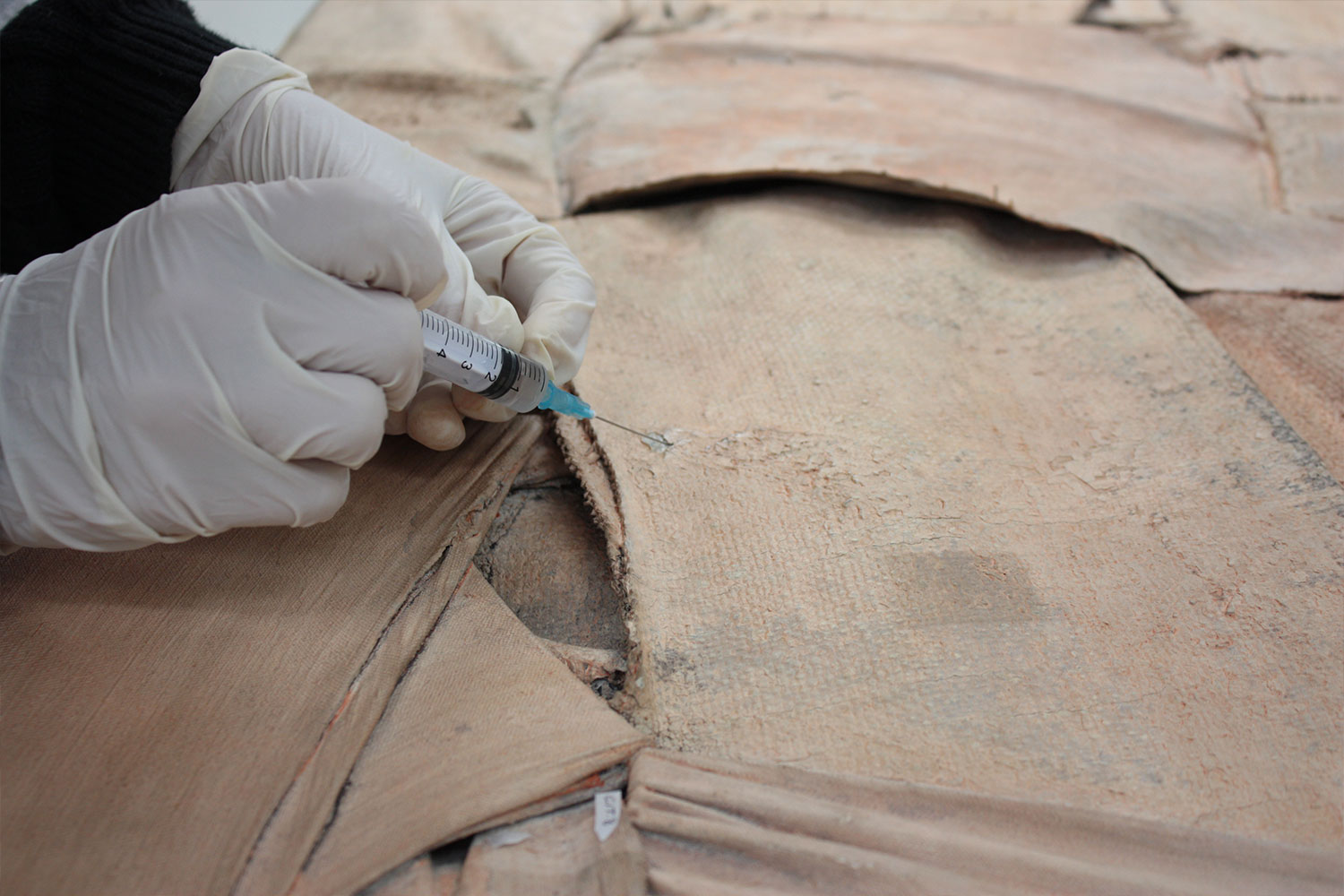 Mixed media
Mixed media
Restorers of a fragile 1958 abstract piece by Salvatore Scarpitta strengthen its layers of paint by injecting the material with synthetic resin activated with thermal cautery.
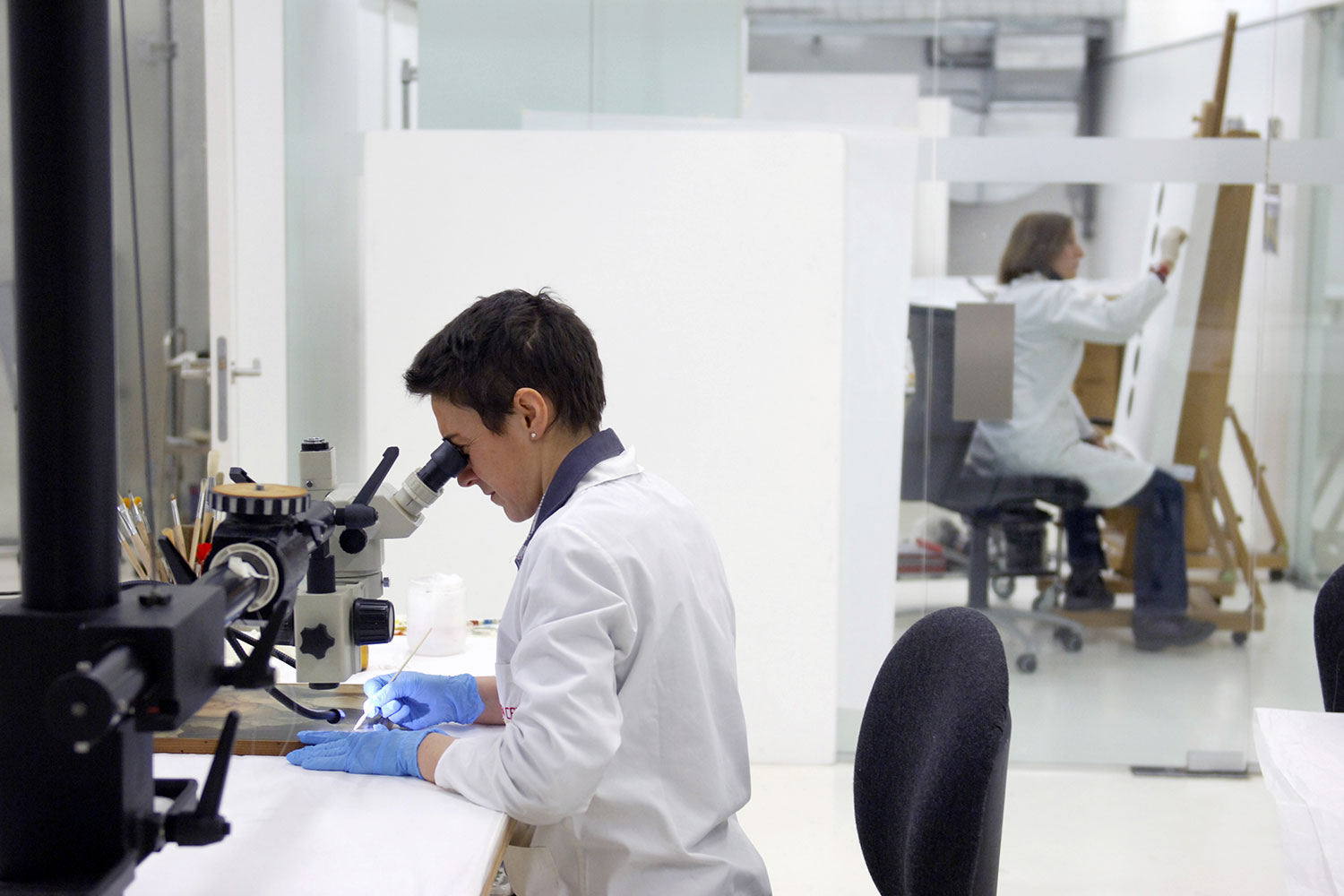 Painting on wood
Painting on wood
A painting on a wooden board by 15th century artist Giovanni Bellini is painstakingly cleaned by a master restorer working under a microscope.
Discover the skill, passion and talent of art restorers as they work on eight pieces of antique and contemporary art. They include: a 15th century Holbein tapestry, a 16th century Florentine wooden chest, an 18th century wall clock by watchmaker JB Duchesne, and a green polyurethane foam foot created in 1969 by Gaetano Pesce. By wearing Go-Pro cameras, each artisan offers a close-up view of their skillful gestures as they work to restore these unique pieces. Visitors can also watch a demonstration of a 3D laser scanner used to diagnose artworks, and see before and after pictures of restored artworks. You’ll come away with a real understanding of art restoration and a new appreciation of the talented hands and minds that undertake such delicate work.
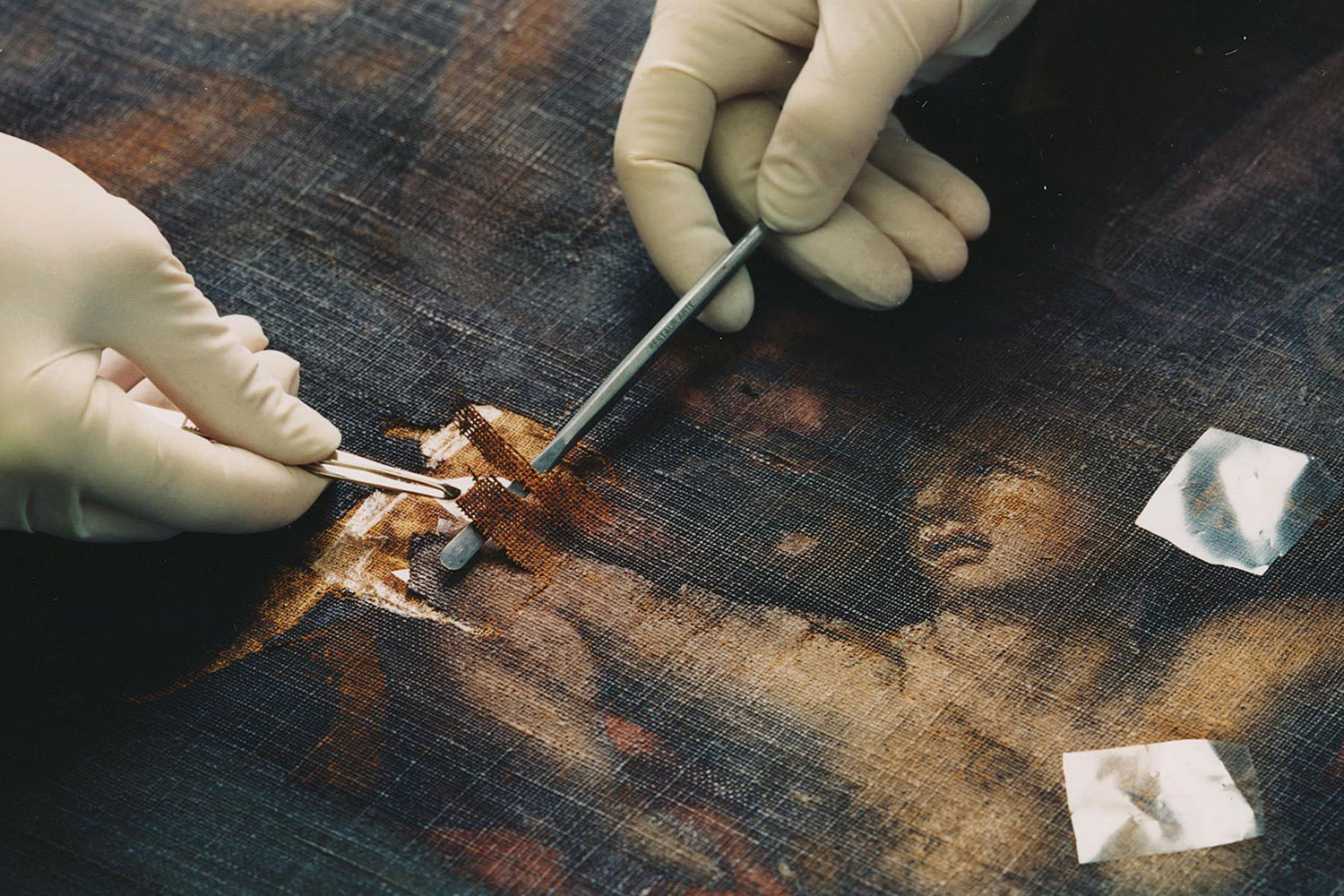 Tempera on canvas
Tempera on canvas
A restorer works carefully with tweezers to repair the torn canvas of a 16th century work in tempera, an ancient method of painting that mixes pigments with a binder such as egg yolk.
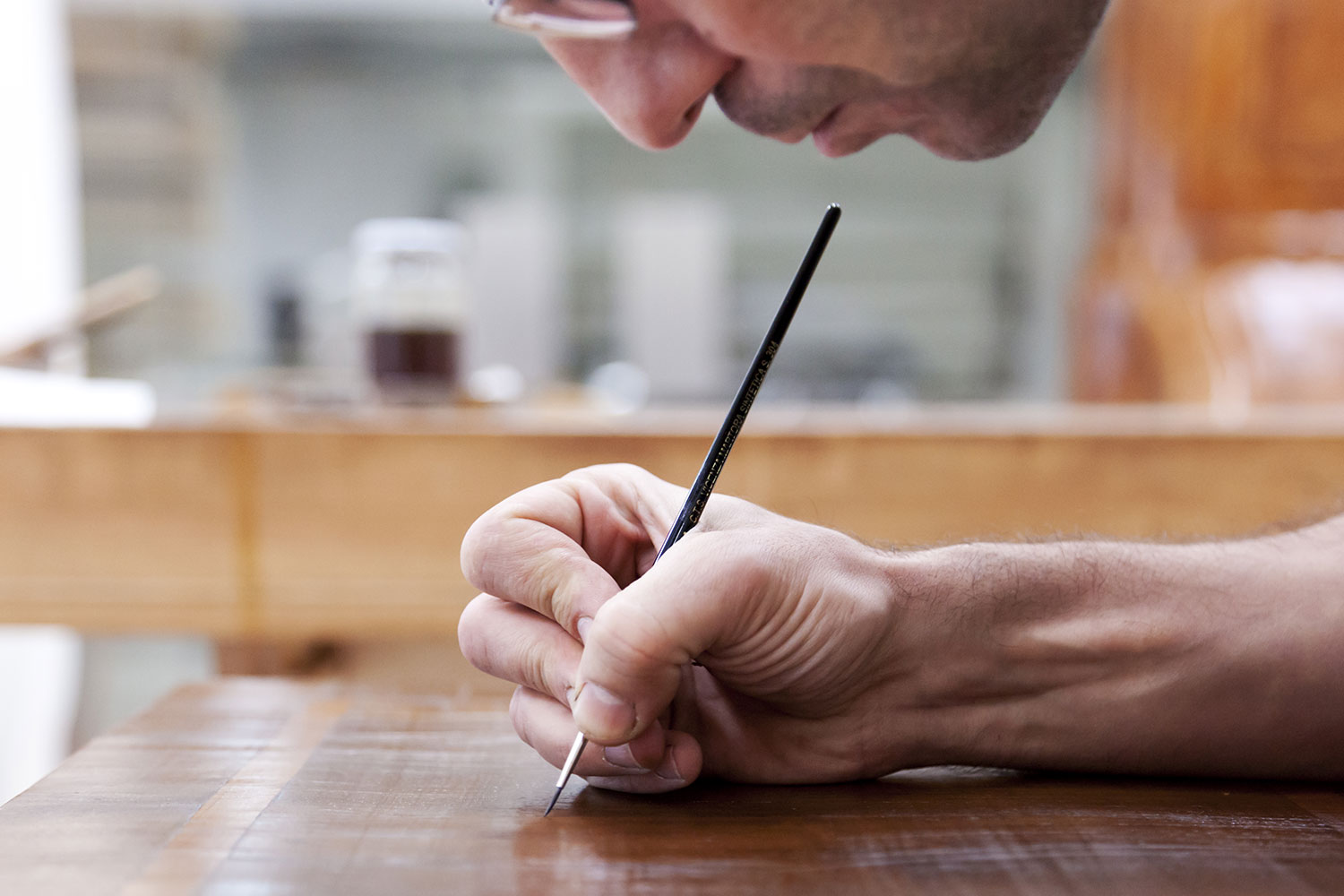 Wooden furniture
Wooden furniture
After a new wood graft is fixed to a dresser by 18th century cabinetmaker Giuseppe Maggiolini, a restorer gives it a superficial patina to make it blend in perfectly with the existing wood.
Twelve talented restoration artisans from Open Care will work on site during the exhibition, revealing the secrets of their work to visitors. They include:
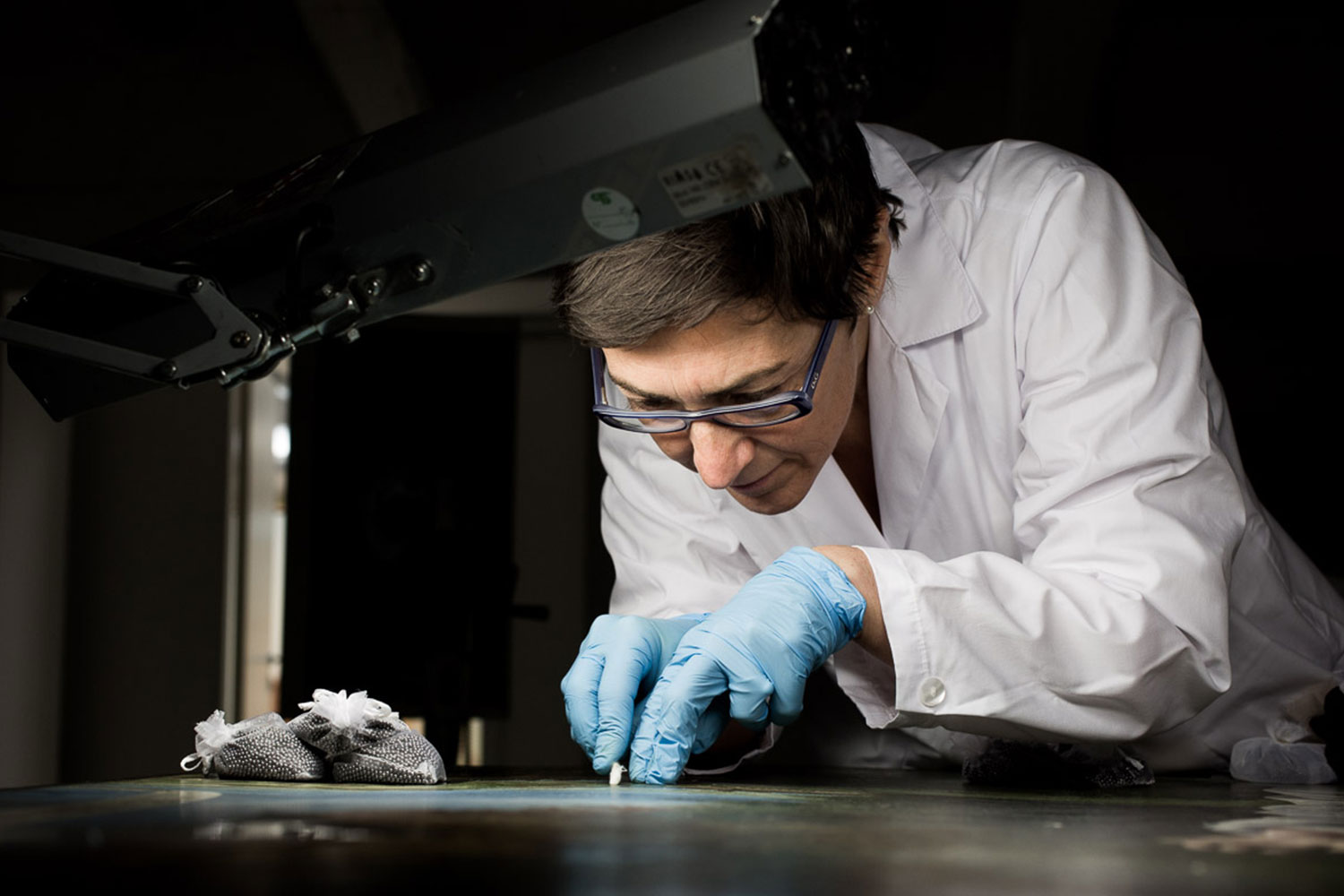 Federica Salvioni, Paintings, mixed media artworks and frescoes conservator-restorer
Federica Salvioni, Paintings, mixed media artworks and frescoes conservator-restorer
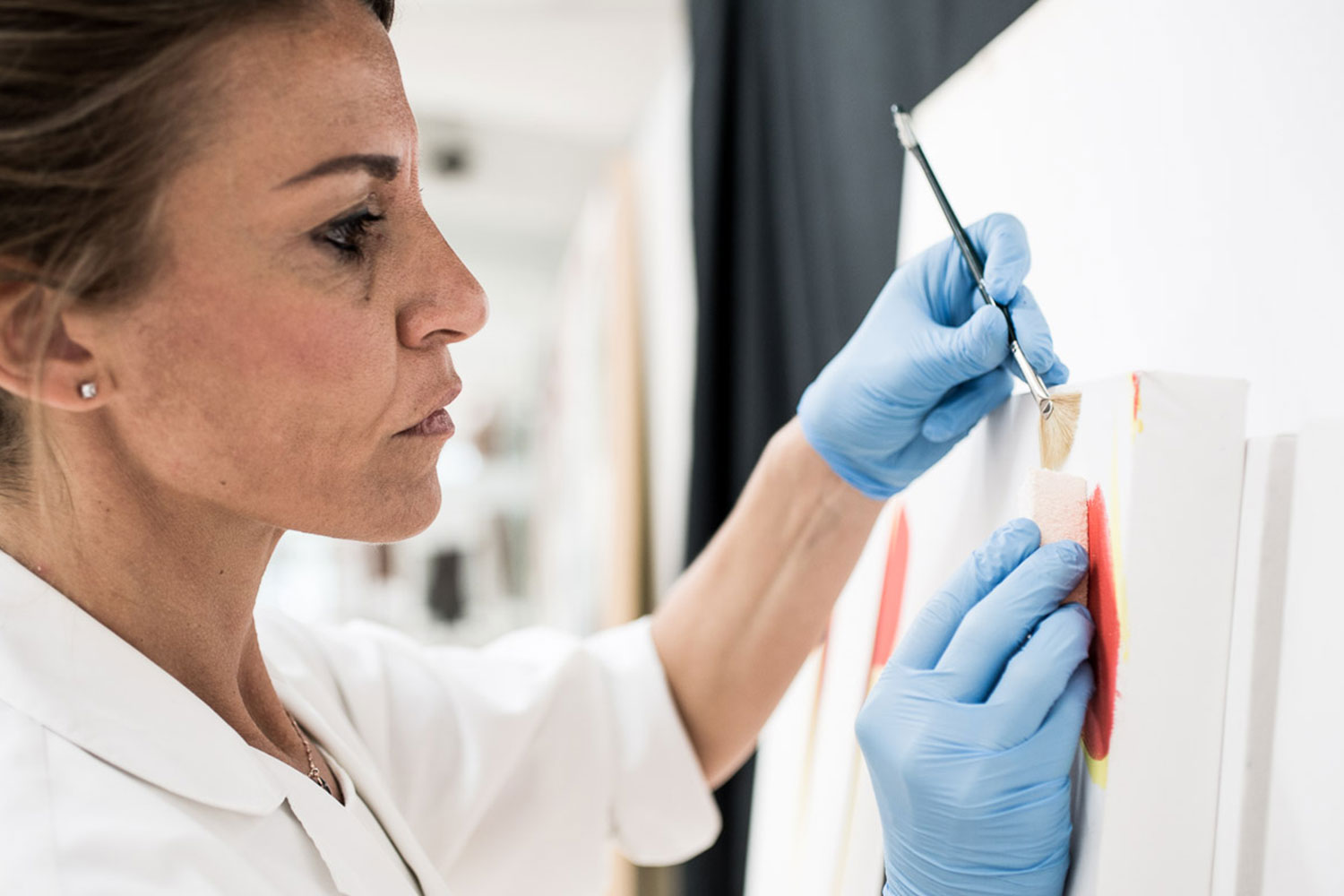 Enrica Cabianca, Paintings and mixed media artworks conservator-restorer
Enrica Cabianca, Paintings and mixed media artworks conservator-restorer
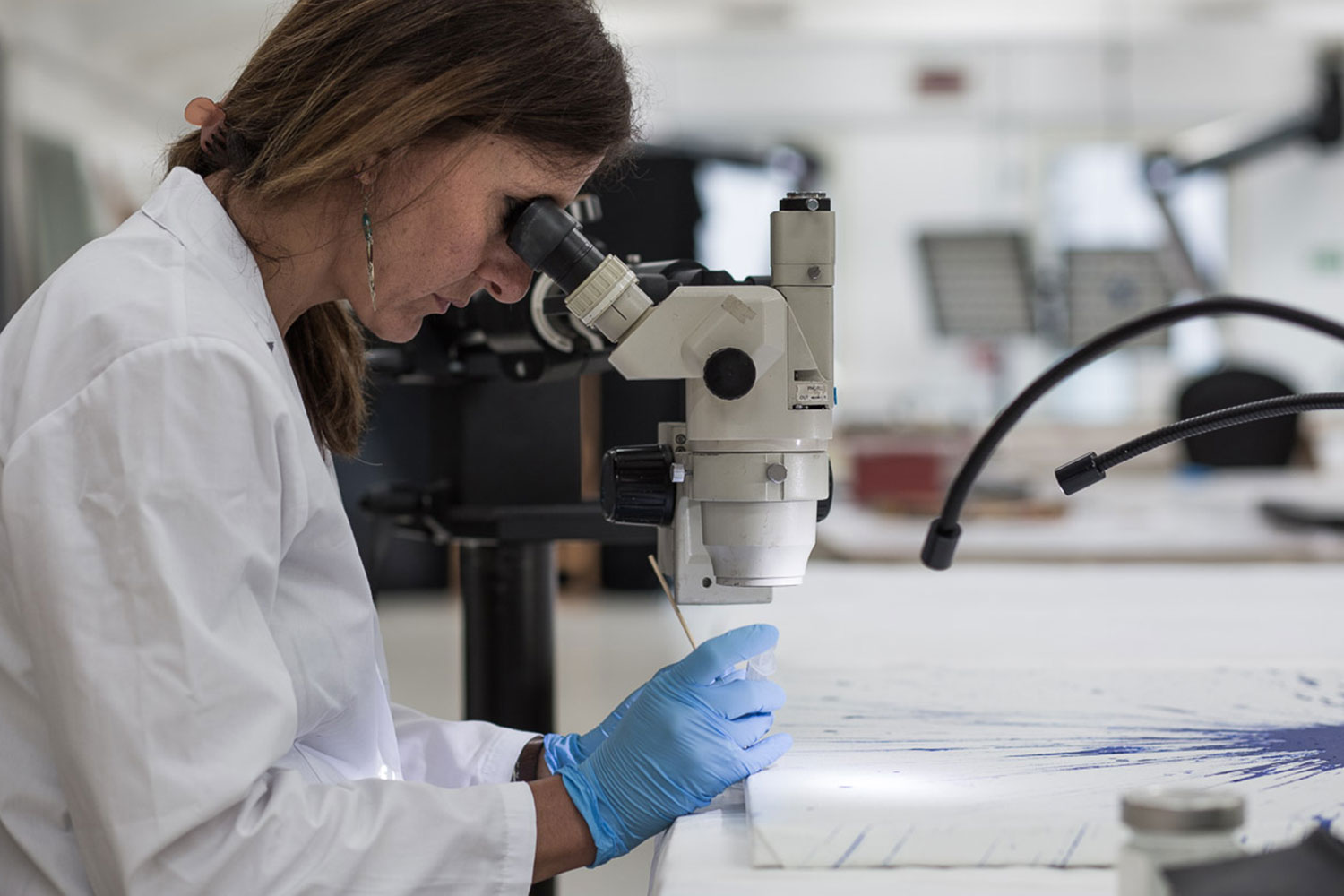 Chiara Fiegl, Paintings and mixed media artworks conservator-restorer
Chiara Fiegl, Paintings and mixed media artworks conservator-restorer
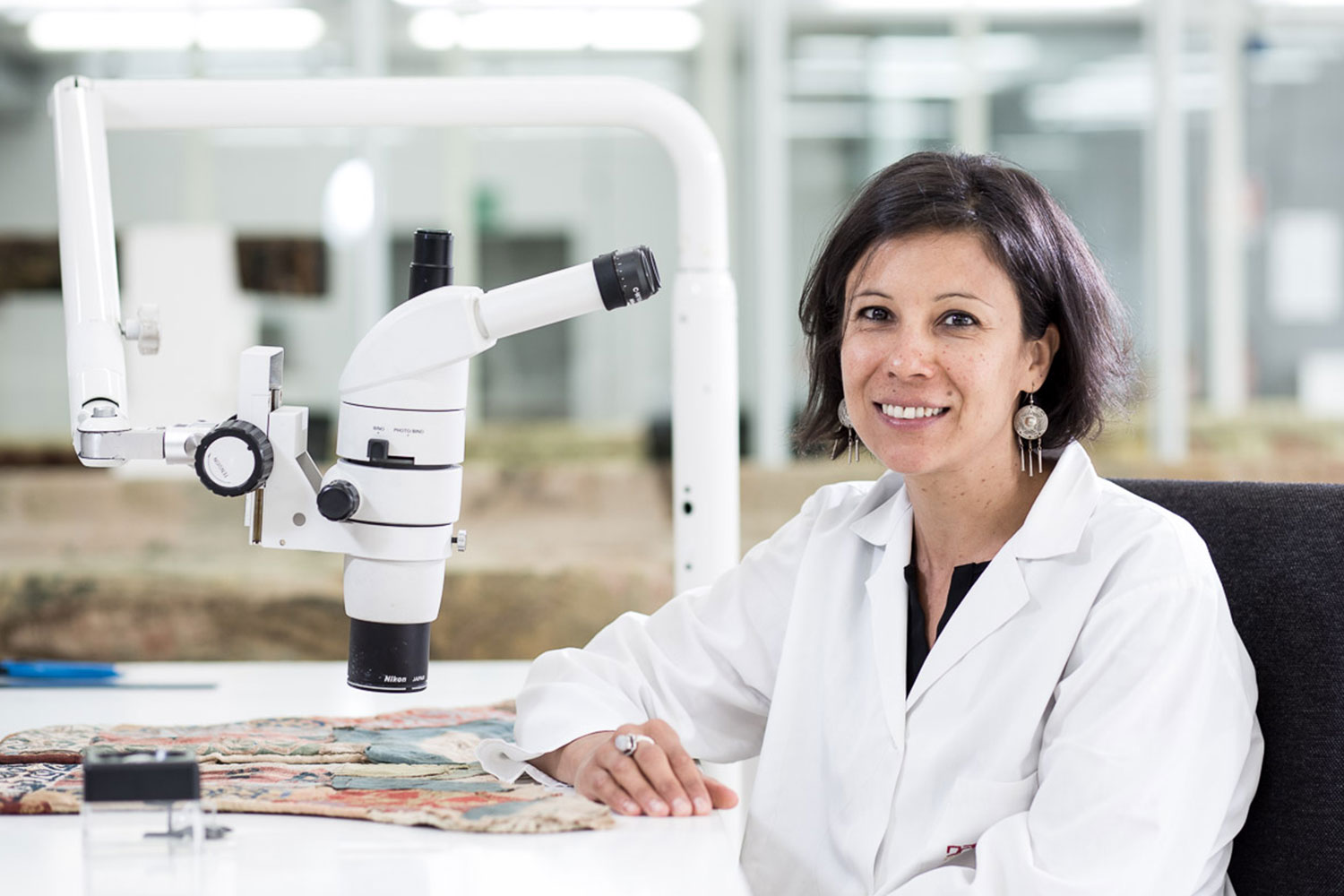 Milena Gigante, Tapestries, ancient textiles and carpets conservator-restorer
Milena Gigante, Tapestries, ancient textiles and carpets conservator-restorer
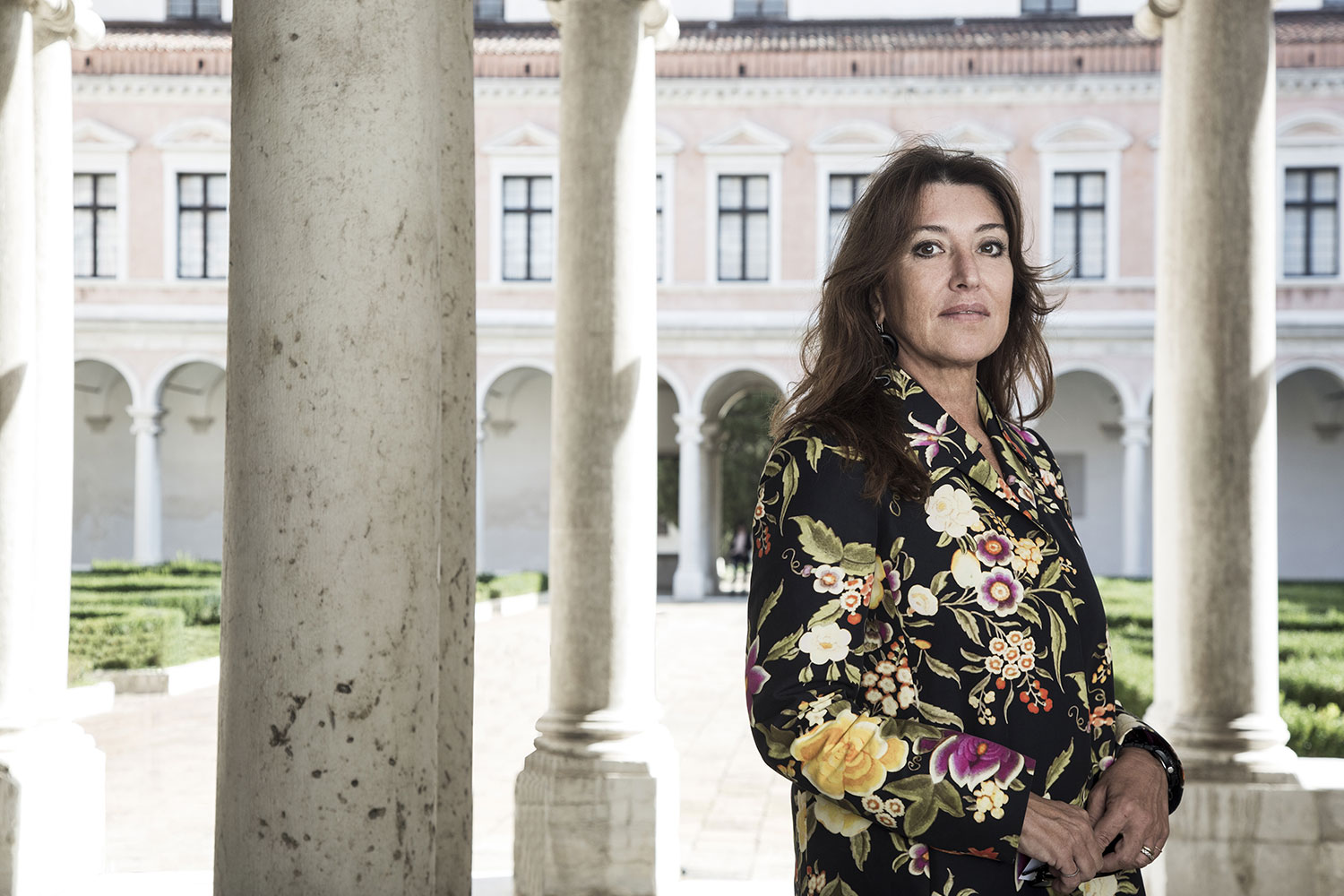
Isabella Villafranca Soissons is a graduate of architecture and painting restoration. After working for many years as a conservator in New York and London, she is now based in Milan, where she helped to build Open Care’s Conservation and Restoration Department and now serves as its director. Following her training and initial experience in antique art, she turned her attention to the material, technical and conservation-related aspects of contemporary art. She is also a curator, teacher and speaker, and serves as vice president of the scientific committee for the Plastic in Art and for Art courses at the Plart Foundation in Naples.
www.opencare.it
 Michelangelo Foundation
Michelangelo Foundation Homo Faber Event
Homo Faber Event

